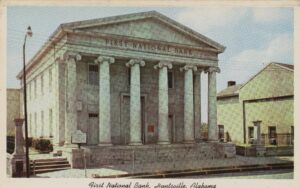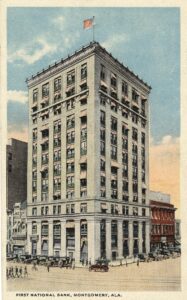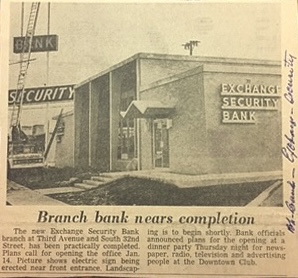Regions’ history is one marked by collaboration with a focus on customers.
“Despite all the advancements in technology, banking, at its core, is still a people business,” explains Christian White, Birmingham market executive for Regions. “We have a long track record of serving people and businesses in Alabama. At the same time, we have a strong vision for the future, from our branch network to our digital banking services.”

(Regions Bank/Contributed)
Regions’ origins trace back a remarkable 172 years – meaning the companies that would become Regions Bank were around well before the Great Depression in the 1930s, the Great Recession in 2008 and 2009, and even the turn of the previous century. The rock-solid Regions that Alabamians know today is built on a foundation of local management, a strong set of core values, and bank associates who believe in its mission of making life better for the people and places it serves.
So, while Regions Financial Corporation has seen major historical events and cultural shifts when many other banks were bought out, moved out, or were absorbed by others, Regions survived by coming together for the best interest of its customers.
So, how did it all begin?
Let’s go back to 1970. There were three major banks in Alabama that not only survived the Great Depression but continued to grow, serving businesses and individuals as partners in economic expansion throughout the state.

(Regions Bank/Contributed)
The three banks at the helm were: First National Bank of Huntsville, First National Bank of Montgomery, and Exchange Bank of Birmingham. All of which grew by acquiring more banks.

(Regions Bank/Contributed)
However, as business was booming, so was the need for loans. The increase in demand required Alabama banks to work with Atlanta banks to secure large enough loans for customers. The First National Bank of Montgomery’s loan limit at the time was $640,000. While Atlanta banks were being utilized as a helpful resource more often, they also started calling Alabama customers to cut out the middleman, causing tensions to rise.
For example, Blount Brothers Construction, a longtime customer of First National Bank of Montgomery, was unable to secure a loan due to the size of the bank, which determined how much it could loan.
“He was forced to leave town to meet his firm’s credit requirements,” said Frank Plummer, who became executive vice president of First National Bank of Montgomery in 1953.
Plummer, frustrated at the inability to serve his faithful customers, had a plan of action. He called together Norman Pless at Exchange Security and Robert Lowry at First National Bank of Huntsville to create a holding company. Congress passed the Bank Holding Company Act in 1956 allowing banks to set up holding companies to acquire other banks in states where the purchasing bank was headquartered.

(Regions Bank/Contributed)
The merger would give the banks a combined $446 million in assets, allowing them to make larger loans. On July 2, 1970, the application was filed.
That wasn’t the end
After a September 1970 hearing, a bank examiner ruled against the formation of the bank holding company. Plummer noted, “We lost the first round.” But through continued collaboration, Pless, Lowry, and Plummer, resolute in their values, fought for their customers and their state, which laid the groundwork for the new bank holding company to be approved and for what would become Regions Financial to form and flourish.
More to the story

(Regions Bank/Contributed)
Between 1972 and 1997, more history was made. A bill was passed that allowed the expansion of banks to purchase or be purchased by out-of-state banks, thus affiliate banks changed their names to First Alabama Bank, and eventually to Regions Bank to reflect its growing reach throughout the South with acquired locations in Florida, Georgia, Louisiana, and Tennessee. The merger readers may recall most prominently began in May 2006, when Regions agreed to acquire AmSouth. The deal closed six months later, and all AmSouth branches bore the Regions Bank name and logo by December 2007.
Years before, Frank Plummer had said, “We have a job to provide a service to our customers, our employees, our stockholders, and the community. That was our main thrust back then.”
“Our methods of serving customers have evolved over time, but the focus remains the same,” White concluded. “We are not here to just open accounts or issue loans. We’re here to build relationships with our customers and leverage the insights of our teams – which stretch across more than a dozen states – to help our clients find the best financial options for reaching their own, unique goals.”




